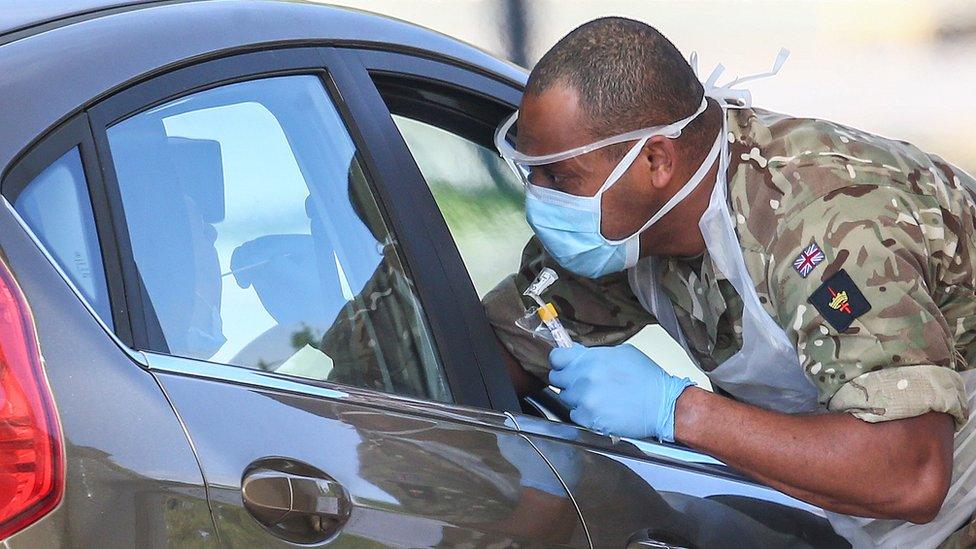Coronavirus: Lockdown flypast marks Armed Forces Day
- Published
The Hawk jets took to the skies above Scarborough Castle
The Red Arrows have performed a flypast in Scarborough for Armed Forces Day.
The Hawk jets took to the skies above the coastal town in North Yorkshire, which had planned to host an event that was cancelled due to the coronavirus pandemic.
The Queen and Prime Minister Boris Johnson led tributes to veterans and serving military personnel.
The defence secretary praised the forces' "professionalism, commitment and versatility" during the pandemic.
Normally events are held across the country but the coronavirus lockdown has cause most celebrations to move online this year.
The armed forces have been involved in the UK's response to Covid-19, helping to repatriate British citizens from abroad, designing and distributing PPE and constructing hospitals.
The Hawk jets flew over the Army's Catterick Garrison, RAF Leeming and the town of Scarborough.
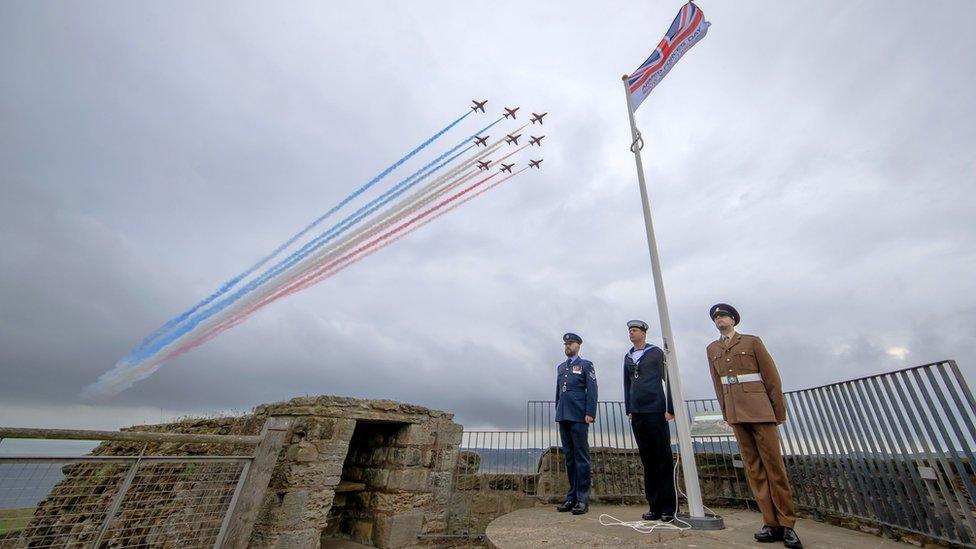
The Red Arrows passed over an Armed Forces Day flag in the castle grounds
Among the military personnel Mr Johnson spoke to ahead of the celebrations were Lieutenant Colonel Harvey Pynn, who led a team of 20 military medics supporting the London Ambulance Service transporting patients to the NHS Nightingale hospital in London, and Wing Commander Claire Collis who was involved in the repatriation of British citizens from India and Pakistan.
"Whether you're a regular, a reservist, a civilian contractor, a veteran, or the family and friends who support our military in so many ways, we as a nation salute you," Mr Johnson said.
"We know that - day and night, at home and abroad, at sea, on land, in the air and even in space and online - our fantastic armed forces are there for us."
The Queen said in a statement: "Having had members of my family serve in each of the armed services, I know only too well of the pride service personnel take in their duty.
"As your commander-in-chief, I send my warmest best wishes to you all, your families, and the entire armed forces community."
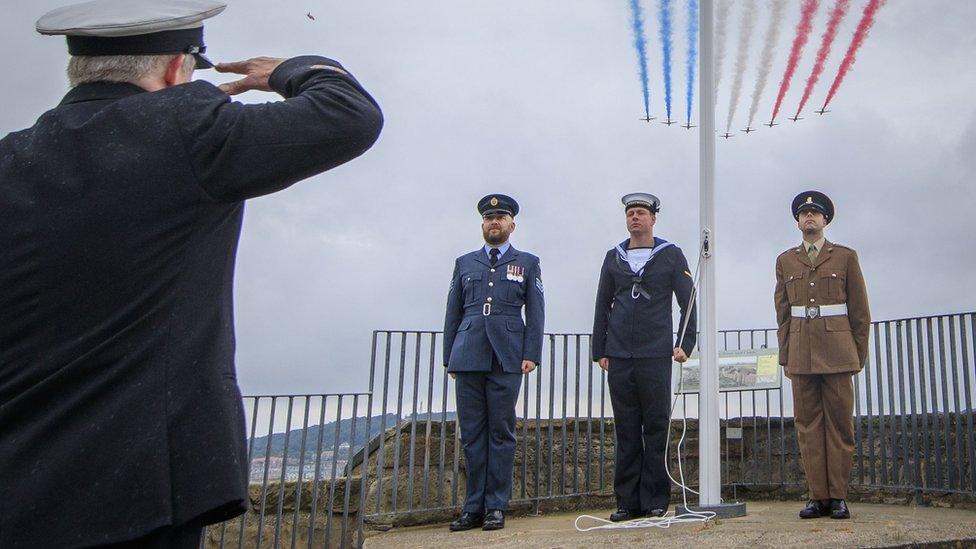
The jets left a colourful smoke trail over the coastal town
Instead of the usual parades, military bands will commemorate the day with performances streamed on the armed forces' Facebook and Twitter pages, where behind-the-scenes views of the Royal Navy's HMS Queen Elizabeth and the Red Arrows will also be shown.
Defence Secretary Ben Wallace said: "The armed forces community cannot celebrate in person this year, so we are doing our best to show you through social media who our people are, what they do, and how you can show your support."
Labour leader Sir Keir Starmer has also issued a statement thanking military personnel "for the role they play both at home and abroad".
It comes as the party launches its Labour Friends of the Armed Forces scheme in a bid to "open up Labour again to our armed forces, their families and veterans across our country".
The Ministry of Defence has already announced that next year's Armed Forces Day will take place in Scarborough.
Meanwhile, the Royal Navy has unveiled a new uniform for its Royal Marines.
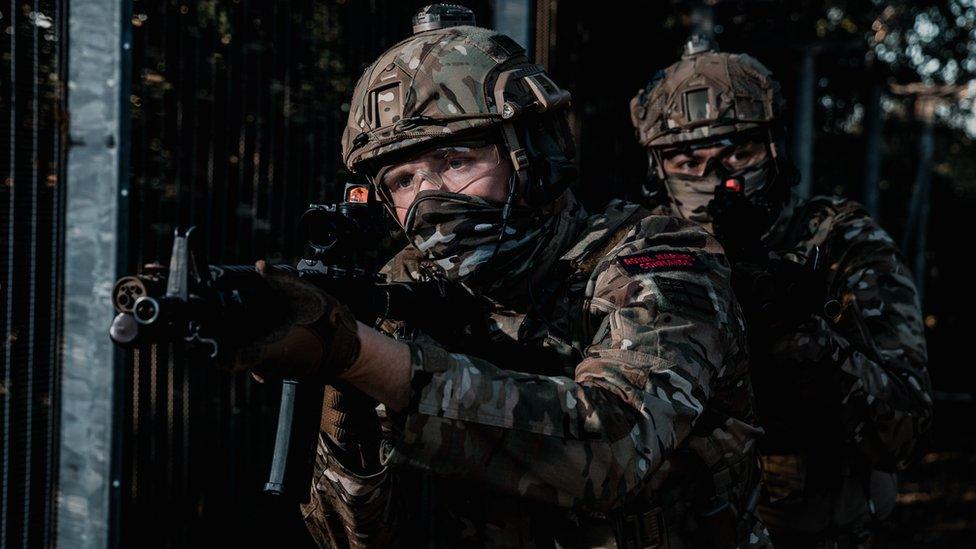
Royal Marines have a new uniform
It says its commandos can rely on the uniform "in the most hostile of environments on Earth".
It features new branding, which includes the traditional insignia worn by commandos in World War II, and is part of a drive to change how the "Green Berets" operate.


The new uniforms are not just a rebranding exercise.
After spending the past few decades fighting in Iraq and Afghanistan alongside other infantry units, the Royal Marines are returning to their more traditional and specialist roles.
One that reaffirms their links as a key element of the Royal Navy and as an elite fighting force. It's no accident that the images released makes them look more like Special Forces.
As well as the new uniform and insignia, they're seen with night vision goggles and using a Diemaco rifle as favoured by the SAS and SBS, rather than the standard issue SA80.
The Royal Marines are also looking to the past for inspiration. The new-look patches recall the daring commando raids conducted in the Second World War.
It's how they see their future, alongside skills of conducting amphibious assaults and arctic warfare.
With the defence budget under constant strain the costs of this transformation will be relatively modest.
The Royal Navy has a much harder task working out how to pay for new ships, aircraft and submarines.
And for the Royal Marines, who pride themselves on innovation, it may help just help secure their future in any discussion about more defence cuts.
- Published13 April 2020
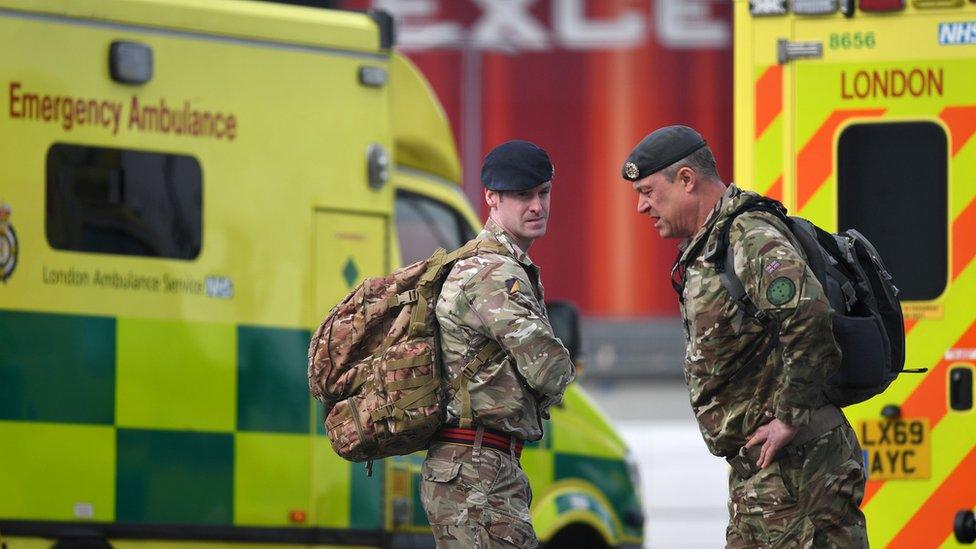
- Published26 April 2020
